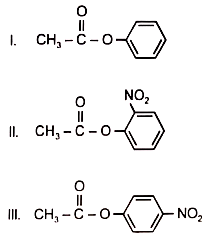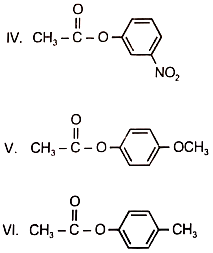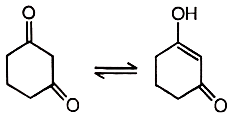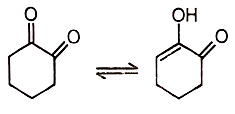Product (A) can give
1. Haloform test
2. Aldol condensation
3. Cannizaro reaction
4. Both (A) & (B)
Subtopic: Aldehydes & Ketones: Preparation & Properties |
71%
From NCERT
To view explanation, please take trial in the course.
NEET 2025 - Target Batch
Hints
To view explanation, please take trial in the course.
NEET 2025 - Target Batch
Consider the following reaction,
The B and C are respectively:
1. RCHO and HCHO
2. RCOOH and HCOOH
3. RCH2OH and CH3OH
4.
Subtopic: Aldehydes & Ketones: Preparation & Properties |
76%
From NCERT
To view explanation, please take trial in the course.
NEET 2025 - Target Batch
Hints
To view explanation, please take trial in the course.
NEET 2025 - Target Batch
To view explanation, please take trial in the course.
NEET 2025 - Target Batch
Hints
The values of some of the acids are given below:
| Acid | \(\mathrm{pK_a}\) | Acid | \(\mathrm{pK_a}\) |
 |
-0.6 | HI | -10.0 |
 |
4.8 | \(\mathrm{HC} \equiv \mathrm{CH}\) | 25 |
| \(\overset{+}{N}H_4\) | 9.4 | \(H_2S\) | 7.0 |
The correct order of leaving tendency of their conjugate bases is:
| 1. |  |
| 2. |  |
| 3. |  |
| 4. |  |
Subtopic: Acid Derivatives - Preparation, Properties & Uses |
51%
From NCERT
To view explanation, please take trial in the course.
NEET 2025 - Target Batch
Hints
To view explanation, please take trial in the course.
NEET 2025 - Target Batch
Among the following esters. form a pair of least reactive and most reactive ester towards hydrolysis in that order


1. V. III
2. VI, II
3. I, IV
4. I, V
Subtopic: Isomers & Reaction Mechanism |
64%
To view explanation, please take trial in the course.
NEET 2025 - Target Batch
Hints
The product which cannot be formed is:
| 1. |  |
| 2. |  |
| 3. |  |
| 4. |  |
Subtopic: Isomers & Reaction Mechanism |
67%
From NCERT
To view explanation, please take trial in the course.
NEET 2025 - Target Batch
Hints
To view explanation, please take trial in the course.
NEET 2025 - Target Batch

The product formed in this reaction is
1. ![]() 2.
2. 
3. ![]() 4.
4. ![]()
Subtopic: Carboxylic Acids: Preparation & Properties |
52%
To view explanation, please take trial in the course.
NEET 2025 - Target Batch
Hints
Reaction equilibrium will shift towards the right in:
| 1. |  |
2. |  |
| 3. |  |
4. |  |
Subtopic: Aldehydes & Ketones: Preparation & Properties |
To view explanation, please take trial in the course.
NEET 2025 - Target Batch
Hints
To view explanation, please take trial in the course.
NEET 2025 - Target Batch
Hints
To view explanation, please take trial in the course.
NEET 2025 - Target Batch
The Wolf Kishner's reduction cannot be applied to:
| 1. |  |
2. |  |
| 3. |  |
4. |  |
Subtopic: Name Reaction |
From NCERT
To view explanation, please take trial in the course.
NEET 2025 - Target Batch
Hints
Links
To view explanation, please take trial in the course.
NEET 2025 - Target Batch














